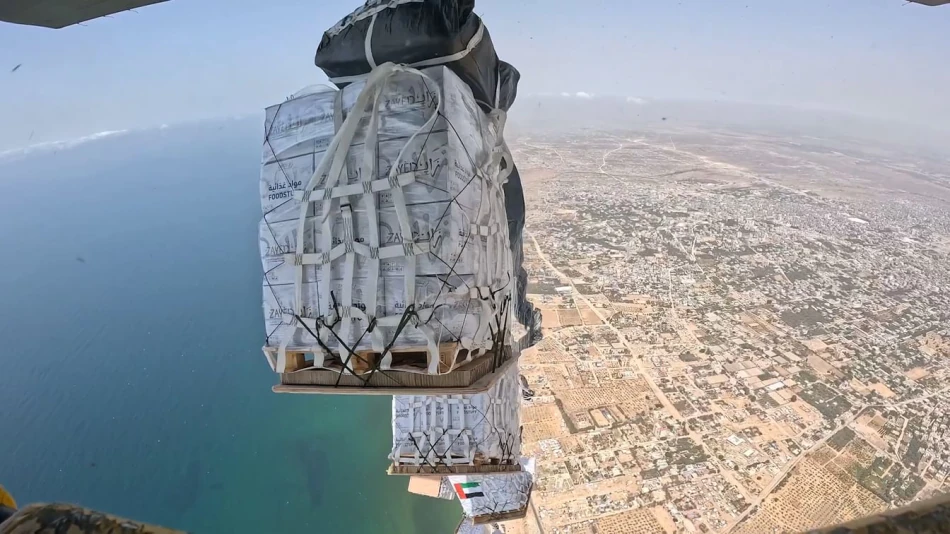
UAE Continues Airdropping Aid to Gaza as Part of 'Birds of Goodness' Operation for Third Consecutive Day
UAE Delivers 56th Airdrop to Gaza as "Birds of Goodness" Initiative Reaches 3,763 Tons
The United Arab Emirates has conducted its 56th consecutive airdrop of humanitarian aid to isolated areas of Gaza, marking three straight days of operations under the "Birds of Goodness" initiative. The UAE-Jordan partnership has now delivered nearly 3,763 tons of essential supplies using 195 aircraft, representing one of the region's most sustained aerial humanitarian campaigns in recent years.
Operation "Noble Knight 3" Demonstrates Strategic Humanitarian Diplomacy
The airdrops fall under the broader "Noble Knight 3" operation, which highlights the UAE's calculated approach to humanitarian diplomacy in the Middle East. Unlike traditional ground-based aid delivery, the aerial strategy allows the Emirates to bypass security restrictions and territorial complications that have historically hampered relief efforts in Gaza.
The choice of aerial delivery reflects both practical necessity and diplomatic positioning. Ground access to Gaza remains severely limited due to ongoing security concerns, making airdrops one of the few viable methods for reaching isolated communities. This approach mirrors similar strategies employed by international organizations in conflict zones worldwide, from Syria to Afghanistan.
Regional Coordination Signals Broader Diplomatic Alignment
The UAE's partnership with Jordan in these operations reveals significant regional coordination that extends beyond humanitarian concerns. Jordan's participation provides crucial logistical support and regional legitimacy, while allowing both nations to demonstrate active engagement without direct political involvement in the conflict.
Scale and Sustainability of Aid Delivery
The 3,763-ton delivery total represents substantial logistical coordination, requiring sophisticated planning for aircraft deployment, cargo preparation, and drop zone identification. The use of 195 aircraft suggests a major commitment of aviation resources, indicating this initiative ranks among the UAE's priority humanitarian operations.
For comparison, similar aerial humanitarian campaigns typically operate on much smaller scales. The sustained nature of this operation—with daily drops continuing for extended periods—demonstrates the UAE's capacity for long-term humanitarian logistics.
Implications for Regional Humanitarian Leadership
This initiative reinforces the UAE's positioning as a regional humanitarian hub, building on its established role in disaster relief and international aid. The Emirates has consistently leveraged humanitarian assistance as a tool of soft power diplomacy, from Yemen to Syria, and this Gaza operation follows that established pattern.
The emphasis on "coordination with regional and international partners" suggests the UAE is working to build broader coalitions for Gaza aid delivery, potentially creating frameworks for future humanitarian operations in the region. This approach could establish precedents for how Gulf states engage in humanitarian crises while maintaining political neutrality.
Operational Challenges and Adaptations
Aerial aid delivery presents unique challenges, including precision targeting, package integrity during drops, and ensuring supplies reach intended recipients rather than being intercepted or misdirected. The UAE's ability to conduct 56 consecutive operations suggests they have developed effective protocols for these challenges.
The focus on "isolated areas" indicates sophisticated intelligence and coordination capabilities, allowing aid to reach communities that traditional relief organizations cannot access through conventional channels.
 Sara Khaled
Sara Khaled







